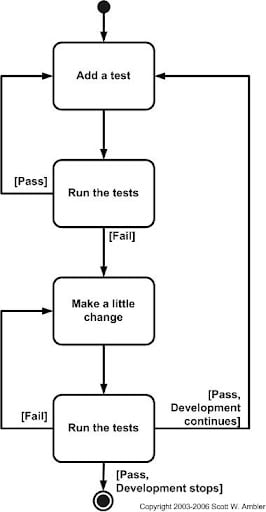Best Practices to Improve Your Software Testing Projects in 2022
In the mid-2000s, Toyota car owners and several cab drivers complained about the auto acceleration of their vehicles without even touching the pedal. After thorough research and investigation, it was found that a software error was causing such an issue.
This shows how a single glitch in the software can cause massive problems for any brand, emphasizing the need for a reliable software testing process. An error-prone software can also incur more cost on fixing bugs and also improving the entire process.
The software testing market is growing at a CAGR of more than 7% for the forecast period of 2021-27. As a result, it will also achieve more than $60 billion in revenues by the end of 2027. Furthermore, the market for software testing is gaining momentum due to the rapid acceptance of automation among several organizations.
There is no denying that organizations do spend massive amounts of money on software testing. However, with some practices, you can reduce not just cost but also improve the performance of the software. Here, we will discuss some of the best practices that you can leverage to improve the software testing process and avoid errors.
#1. Software Testing Plan
The first best practice is planning your software testing for different variables that may affect the entire process. For example, a well-designed software testing project has comprehensive documentation, which helps in further tests and assignments.
Documentation is one of the essential aspects of any software development project as it provides detailed insight into specifications and resources which testers can reuse. Apart from these, it allows software testers and developers to improve the quality of products based on best practices documented during the testing process.
Here are some of the significant documentation to keep for your software testing process,
Quality management planning- This document lists all the testing process’s quality requirements that need to be met for optimal results.
Strategy documentation- It is a list of business requirements that software testers need to keep track of while executing the tests.
Testing plan- This document outlines the operational requirement and the scope of different testing processes across projects.
Test case documentation- It helps classify different test cases and elements related to the identification of each case. The documentation has comprehensive information on all the test cases executed and to be tested.
#2. Test-oriented Development
The test-oriented development approach is one of the most effective practices for software testing as it helps achieve better product quality. One such approach that you can use is Extreme Programming(XP), which helps create high-quality software that can adjust according to the requirements.
There are two popular XP approaches used in software development,
- Test-driven development
- Pair programming
Test-driven development
Test-driven development refers to a programming style where coding, writing unit tests, and design. The first step towards TDD is to add a test case with enough code to fail. So, you can adjust the main source code according to the earlier failure and test again for passing it.
Here, before every retest, you need to refactor the code to ensure no duplication. Thus, the entire process involves the creation of code subsets instead of writing the complete test code, running tests, checking the error, making adjustments/refactoring, and retesting again.
TDD is also considered as the merger of TFD or Test-first Programming Development and Refactoring. TFD is a process where developers write automated unit tests run periodically through a regression test suite.
The second XP approach that you can use is “Pair Programming.”
Pair programming
Pair programming is an XP approach where two developers work in tandem. One of them writes the code while the other one reviews it to offer suggestions throughout the process. This entire process of parallel programming and review ensures that there are reduced bugs. It also reduces the refactoring cost of the project due to similar feedback.
When you think about the cost of software testing, there are several aspects that you need to consider. From the cost of test case creation to the need for resources, you need to plan everything.
#3. Strategizing Hidden Cost
You might plan your entire testing strategy, yet there are always hidden costs that may arise for your software testing program. So, you need a reliable backup plan that can help you cope with such software testing costs. For example, a software product requires a testing tool that is unique and specific to the requirements.
In such a scenario, QA teams need to learn the tools and techniques to master the software testing process. However, the need for such a training program can increase the cost, and you may even have to outsource specific testing tasks.
Apart from all these costs, there are infrastructure-related expenses that involve paid software required for automation purposes. You may also have to spend on the cloud services, databases, servers, and other services needed for such software testing processes specific to the particular test case.
The cost of updating the testing tools, fixing issues with existing software, and even refactoring expenses can add to such hidden costs. While testing the software, another essential factor you need to consider is time to market, where hyper testing can be a best practice.
#4. Hyper Testing
Hyper testing is a process of leveraging agile methodology for testing where the focus is on three aspects, practice, process, and tools. It unifies all these aspects to offer comprehensive testing for the identification of errors. So, there is reduced time to market with increased returns on investment through lower maintenance.
Another critical aspect of software testing is automation, and here, you need optimization for maximum efficiency.
#5. Optimized Automation
Automation in software testing has seen a massive surge in recent times. According to the World Quality Report 2020-21, there has been an enormous increase in automation and agile methodologies adoption. Automation improves time-to-market, reduces costs, improves efficiency, helps with batch testing and even parallel execution of tests.
You can leverage automation for software testing, especially in,
- Regression testing
- Smoke testing
- Load testing
- Performance tests
To optimize software testing automation, you can leverage a continuous testing approach with CI/CD(Continuous Integration/Continuous Delivery). Here separate automated tests are performed in the system part of the CI/CD pipeline. Through this approach, you can continuously test and integrate software code, reducing development time.
Conclusion
There is no denying that software development needs a reliable testing program to ensure high performance. However, it also ensures risk-free software operations, which is quintessential for manufacturing applications and automobiles.
Here we have discussed some of the best practices for software testing, which can help you improve the entire process and build high-quality products. Though what testing practices to use will always depend on the business-specific requirements.







When I was developing software, all I needed to do is find decent specialists, tell them about my project, and give them clear instructions on the final product. And inoxoft, the guys I worked with, managed to come up with the best real estate development software for my startup, so I don’t regret working with them.
To be honest, I’m not sure that many people actually worry about that when there are s many software developers. It’s not that hard to hire professionals or work with outsourcing companies like https://kindgeek.com/expertise/data_science in order to come up with a high-quality product and be sure that it’s secure and can be updated any time you need.
You also shouldn’t ignore the importance of hiring the right software professionals who will deliver the exact product you need. I was totally satisfied when I chose https://hire.ua/, the IT recruiting agency that managed to find me the experienced software developers based on my needs quite rapidly.